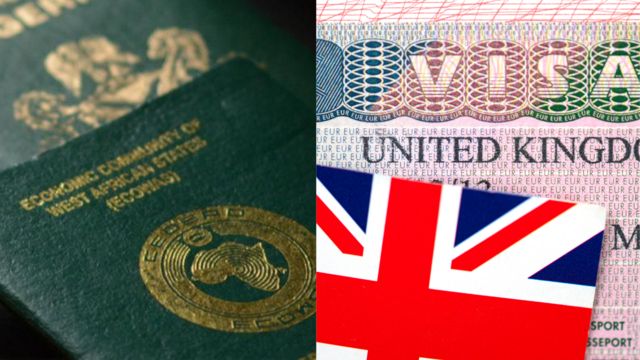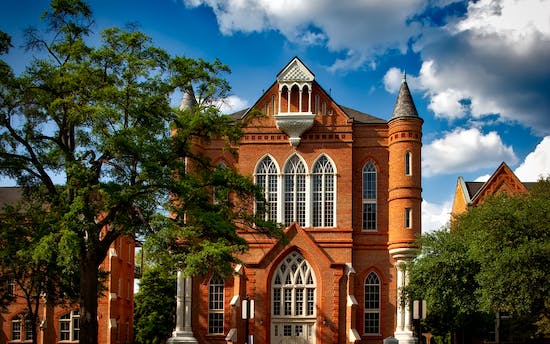The F1 Visa process ln Nigeria can seem daunting, especially when it comes to the payment of the SEVIS Fee. It’s not always clear how to go about paying this fee, and many students find themselves stuck in limbo while they try to figure out what to do. If you’re one of those students, don’t worry—this article will provide an easy-to-follow guide on how to pay for SEVIS Fee for an F1 Visa in Nigeria.
Table of Contents
What is SEVIS Fee?
The SEVIS fee is a processing fee for students seeking to study in the United States. The Student and Exchange Visitor Information System (SEVIS) was created in 2004 after Congress ordered that all exchange visits and international students pay the I-901 SEVIS Fee.
This means that if you are a foreign student studying in the USA on an F1 visa (as well as a J-1 visa), the SEVIS fee is mandatory. The SEVIS fee must be paid regardless of whether or not you are enrolled in a U.S. school or institution. If you are not enrolled in a U.S. school or institution, you will need to pay the SEVIS fee and provide proof of your enrollment information to your U.S. school or institution before enrolling in classes.
With SEVIS, program sponsors and schools can transfer event notifications and important information to the U.S. Department of State (DOS) and the Department of Homeland Security (DHS) as long as a student from outside the United States remains in the United States. These notifications are typically transmitted via the internet.
So, after making payment for the SEVIS fee, you must obtain a receipt that serves as confirmation for previous payments before proceeding to a visa interview. While this receipt is required for your interview, its significance does not end there; you will also need to present it when entering the United States. Program sponsors sometimes include the SEVIS fee as part of the program fee.
When to Pay for SEVIS Fee for F1 Visa?
In addition, you must make payment at least three days before your visa interview. That should not, however, influence when you make payment. The Department of Homeland Security may take some time to upgrade your electronic SEVIS record. To ensure that you have enough time, you should make payment as soon as you receive FORM DS-2019. A SEVIS fee is also required if you are applying for a new J-1 visa.
Where to Pay for SEVIS Fee for F1 Visa?
First and foremost, it’s important to know that only approved designated payment methods can be used for this fee. Thus, several options are available regarding where to pay your SEVIS fee. There are basically three ways to pay the SEVIS Fee in Nigeria, and they are:
- through online using a Credit Card
- through Western Union
- through Mail
through online using a Credit Card
The most popular method of paying the SEVIS fee is to fill out the online I-901 form, which requires a credit card. We recommend paying the SEVIS fee by credit card if you have the option.
Follow these steps to pay online:
- Fill out Form I-901 online at FMJFee.com.
- Submit Form I-901 electronically and pay with a credit card (Visa, MasterCard, or American Express). However, Credit card payments from Ghana, Nigeria, Cameroon, and Kenya are not accepted. These participants must pay in another way.
- Print the online receipt as proof of payment until the formal receipt arrives in the mail. Please keep in mind that you cannot pay your SEVIS fee with a debit card from Nigeria.
through Western Union
Currently, participants in over 130 countries can pay SEVIS I-901 in their local currency using the Western Union Quick PayTM service. Hence, there are no difficulties with using Western Union to pay the SEVIS fee in Nigeria. You can use Western Union to make a payment and send Form I-901.
To do this, follow the steps below:
- Pay in naira at a Western Union Agent near you.
- The following step is to completely fill out a Blue form. You may see terms like ‘Quick Pay’ or ‘Payment Service’ on this form. If you don’t come across any of these, you will come across something very similar. Keep in mind that any of these details you come across will be written in blue. When completing the “Blue Form,” make certain that you leave no stone unturned. It is also important that you fill it out exactly like the downloaded sample.
- Keep the receipt from this transaction. It will serve as proof of payment until you receive a formal receipt. All else being equal, you should receive a formal receipt within three business days of making your payment. You must visit FMJFee.com three business days after making payments to obtain this official receipt. You will see a payment confirmation when you log on to this site. You may print out a copy if you want.
through Mail
It’s also easy to pay for your SEVIS fee through the mail. Here’s what you need to do:
- When paying by mail, the first step is to complete form I-901.
- Prepare a money order or a check. This money order must be drawn from a bank in the US and must be in US dollars. Before making a payment, make sure your name and SEVIS identification number are written on the money order or check.
- Send the payment, along with the form, to Courier/Express mail:
- Regular mail:
I-901 Student/Exchange Visitor Processing Fee
P.O. Box 970020
St. Louis, MO 63197-0020
Or - Courier/express mail:
I-901 Student/Exchange Visitor Processing Fee
1005 Convention Plaza
St. Louis, MO 63101
You may also like:
- Study in the USA Guide for Nigerian Students
- Easy Steps to Study in the USA without IELTS for Nigerian Students
How much is SEVIS fee for f1 visa in Nigeria?
As mentioned above, the SEVIS fee is an important part of the F1 visa application process. This fee varies depending on the purpose of traveling to the United States, and it’s important to know what it costs before you start your application. So, if you are from Nigeria, how much will it cost?
It costs $350 (₦158,000 for CBN rate) for a student from Nigeria to apply for an F1 visa. It’s important to note that this fee must be paid before your I-20 can be issued. With that said, there is nothing stopping you from getting your F1 visa!
Issues Nigerians Face When Paying the SEVIS Fee
If you must successfully pay the SEVIS fee in Nigeria, you must be aware of the difficulties associated with paying the SEVIS fee in Nigeria. It will be much easier to avoid these difficulties if you know them.
There are two major issues with paying SEVIS fees in Nigeria. These challenges are as follows:
- Credit card fraud concerns
- Failure of Nigerian banks to process Western Union payments or issue international checks in order to avoid SEVIS fees.
What is the difference between a SEVIS fee and a Visa fee?
The SEVIS fee is a mandatory charge for all international students who have been accepted to study in the United States. The money collected through this fee helps fund the Student and Exchange Visitor Program (SEVP) operated by U.S Immigration and Customs Enforcement (ICE). It must be paid before the visa application process can begin.
In contrast, a Visa fee is paid upon approval of a student visa application. This fee covers some of the costs associated with processing an individual’s visa application, such as background checks, document reviews, and administrative expenses incurred by you.
Must Read: USA F1 Visa Interview – Questions & Answers for Nigerian Students
Wrapping Up!
In conclusion, paying for the SEVIS fee for an F1 visa in Nigeria is made easy with the steps outlined in this article. Whether you choose to use an online Credit bank transfer or a Western Union, these are secure ways to get the fee paid quickly and easily. With some planning and preparation, you can be ready for your visa interview and have all the documents necessary for a successful trip!










This is very helpful sir. Thank you